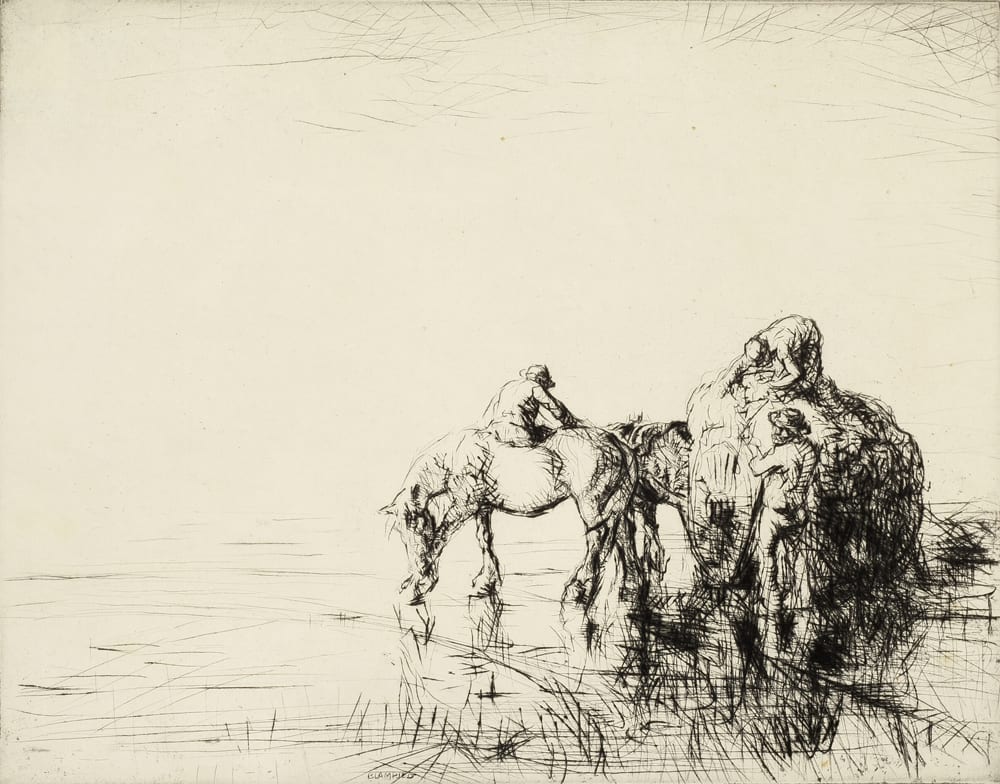Above: Edmund Blampied, Shore Harvest, 1921, Dry-point etching (a selection from Edmund Blampied (1886-1966): Etching & Drypoint, January 19- May 24, The Gallery at Rauch Business Center)
The Island of Jersey is the largest of the Channel Islands and officially known as Bailiwick of Jersey. It measures ten miles east to west and six miles north to south. During Blampied’s time Jèrriais – a variety of Norman – was the language of the island. In fact much of Jersey’s laws, landscape and customs date back to when it was under Norman rule starting around 933. The island also had French influences stemming from its proximity to France. Business transactions were mainly negotiated in French and also used for street names. England entered Jersey’s history in 1204 when due to war conflicts the Channel Islands had to pledge allegiance to England or to France – and they picked England.
Knitting was Jersey’s first successful industry. Knitting became so successful that it endangered the island’s ability to produce its own food. The government was forced to put into effect laws that regulated who could knit with whom and when. At the same time the islanders turned their industry to the sea and became involved with Newfoudland fisheries. As seen in many of Blampied’s works seafood remained a constant form of trade for centuries to come, as well as farming. In the late nineteenth century Jersey became known for the Jersey cow and the Jersey Royal, a type of potato.
And just in case you are wondering… New Jersey is named after the island of Jersey. During the English Civil War the island of Jersey served as a refuge to King Charles II, who you could imagine was very grateful to the island for its hospitality. Shortly afterward, King Charles gave permission to Sir George Carteret to settle islets off of Virginia. Sir George decided to name the islets New Jersey in honor of the island which safely harbored his king during the war.
